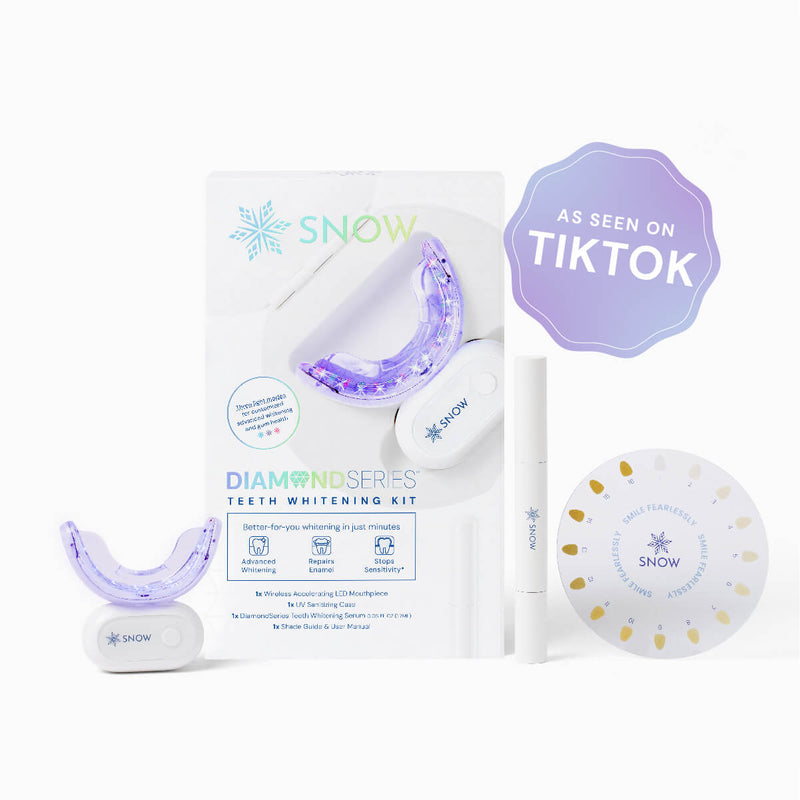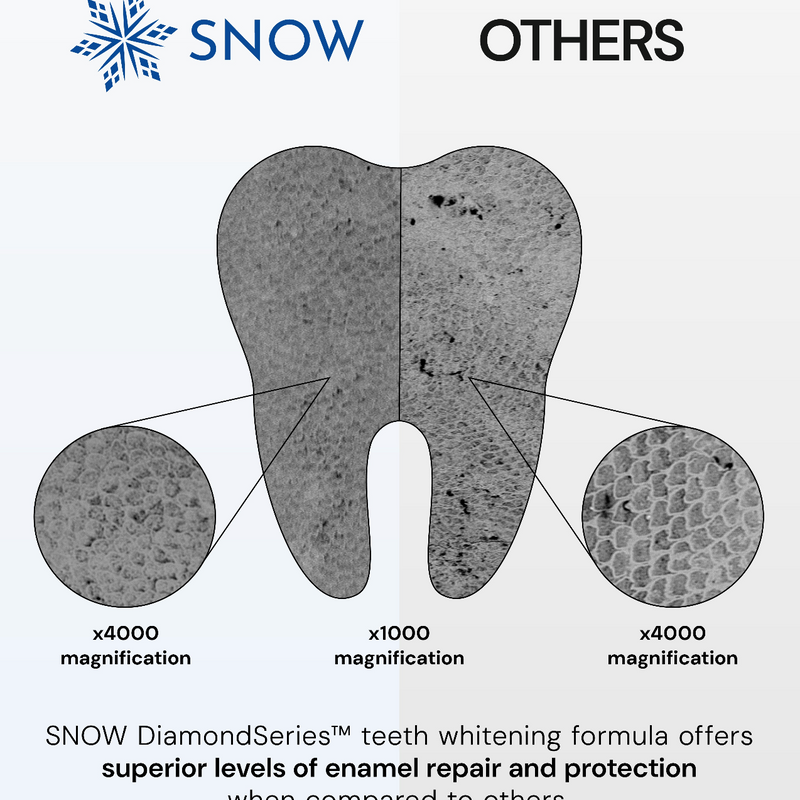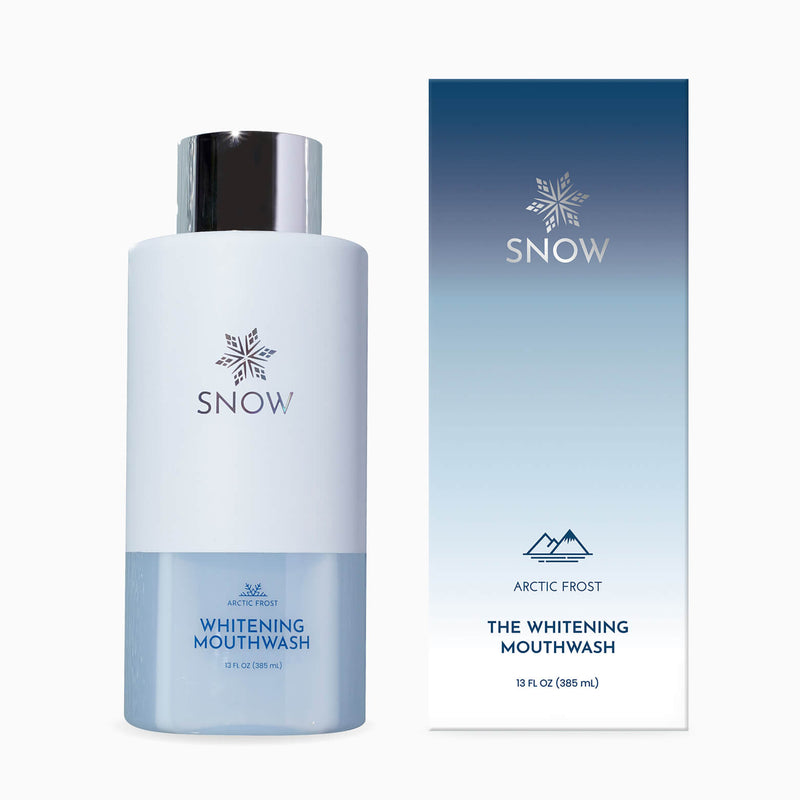Using an electric toothbrush after wisdom teeth removal is a common concern.
At SNOW, our expertise in dental health ensures you're in good hands. Yes, you can use an electric toothbrush, but it's crucial to be gentle and avoid the surgical area initially.
In this guide, we'll detail the best practices for post-operative dental care, explore the pros and cons of using an electric toothbrush after tooth extraction, and provide essential tips for a smooth recovery.
Our aim is to help you maintain optimal oral health and a bright smile during your healing process.
What this article covers:- Can You Brush Your Teeth After Wisdom Teeth Removal?
- What Are Impacted Wisdom Teeth?
- How to Take Care of Your Teeth After Wisdom Teeth Removal
- Pros and Cons of Using an Electric Toothbrush After Tooth Extraction
- What to Look Out for After Your Wisdom Tooth Removal?
- Brushing Teeth After Wisdom Teeth Removal FAQs
Can You Brush Your Teeth After Wisdom Teeth Removal?
Yes, you can brush your teeth after wisdom teeth removal, but with caution. According to the Mayo Clinic, it's essential to avoid brushing the surgical site to prevent dislodging the blood clot, which is crucial for healing.
You can gently brush your other teeth but steer clear of the extraction area.
We recommend you wait at least 24 hours before brushing the teeth near the surgical site to avoid irritation or bleeding.
Using a soft-bristled toothbrush can help minimize any potential discomfort or damage.
What Are Impacted Wisdom Teeth?
Impacted wisdom teeth are third molars at the back of the mouth that lack sufficient space to emerge or develop normally.
According to WebMD, they can grow at various angles, including horizontally. Impacted wisdom teeth can lead to pain, damage to other teeth, and other dental problems.
Removing impacted wisdom teeth often requires surgical intervention to prevent further complications, such as infections or cysts.
Surgical removal is typically recommended to avoid these issues and maintain oral health.

How to Take Care of Your Teeth After Wisdom Teeth Removal
Proper post-operative care is vital for a smooth recovery after wisdom teeth removal.
Here are some essential tips:
Tip #1: Use Gauze Pads To Stop The Bleeding
After the surgery, you'll need to bite down on gauze pads to control bleeding.
Keep the gauze in place for about an hour and replace it as necessary.
Tip #2: Place Ice Packs On The Sides Of Your Face
Apply ice packs to the sides of your face to reduce swelling and numb the pain.
Use the ice packs for 20 minutes on and 20 minutes off for the first 24 hours.
Tip #3: Rinse With Warm Salt Water
Gently rinse your mouth with warm salt water after 24 hours to help keep the area clean and reduce swelling.
Do this several times a day to maintain oral hygiene.
Tip #4: Stick To Soft Foods
Consume soft foods like yogurt, applesauce, and mashed potatoes to avoid irritating the surgical site.
Avoid hot, spicy, and crunchy foods that can disturb the healing process.
Tip #5: Take Pain Medication As Directed
Follow your dentist's instructions for taking pain medication.
Over-the-counter pain relievers like ibuprofen can help manage pain and reduce inflammation effectively.
Pros and Cons of Using an Electric Toothbrush After Tooth Extraction
Understanding the importance of toothbrush selection and maintenance is crucial for optimal oral health.
Using an electric toothbrush after a tooth extraction has its advantages and disadvantages.
This section explores the benefits and potential drawbacks to help you make an informed decision about your oral hygiene routine during recovery.

Pros
Gentle Yet Thorough Cleaning
Electric toothbrushes, like our LED Teeth Whitening Electric Toothbrush, are designed to provide a gentle yet thorough cleaning, which can be beneficial when you're avoiding the surgical area.
Their oscillating and vibrating motions ensure effective plaque removal without excessive pressure.
Better Oral Health Promotion
Consistent use of an electric toothbrush can promote better overall oral health.
By effectively removing plaque and reducing the risk of infection, these toothbrushes can help maintain a clean mouth, which is crucial during the healing process.
Customisable Sensitivity Settings
Many electric toothbrushes come with adjustable settings, allowing you to use a gentler mode that can be more comfortable post-surgery.
This feature is particularly useful for those with sensitive gums or areas near the surgical site.
Convenience For Limited Dexterity
For individuals with limited dexterity, electric toothbrushes can be easier to use.
Their automated brushing motions ensure thorough cleaning with minimal effort, making them ideal for those who may struggle with manual brushing techniques.
If your electric toothbrush head stops spinning, consult the manufacturer's guide or consider replacing the brush head.
Cons
Risk Of Gum Tissue Damage
Improper use of an electric toothbrush, especially on high settings, can damage the delicate gum tissue around the surgical site.
It's essential to use the correct settings and avoid the surgical area to prevent irritation and promote healing.
Higher Initial Cost And Maintenance
Electric toothbrushes can be more expensive initially and require regular maintenance, such as replacing brush heads.
These costs can add up over time, making them a more significant investment compared to manual toothbrushes.
However, proper storage for family toothbrushes helps prevent cross-contamination and maintains hygiene, and the overall costs will be well worth it in the long run.

What to Look Out for After Your Wisdom Tooth Removal?
Monitoring your condition after wisdom tooth removal is crucial to ensure a smooth recovery.
Here's what to keep an eye on:
Bleeding
Some bleeding is normal immediately after the procedure, but if it persists excessively, contact your dentist.
According to our research, applying a moist tea bag to the area can help control bleeding due to the tannic acid, which promotes clotting.
Swelling
Swelling typically peaks around the second or third day post-surgery. Using ice packs and keeping your head elevated can help minimize swelling and discomfort.
Fever
A slight fever is normal during the initial recovery phase. However, if a high fever persists, it could indicate an infection, and you should contact your dentist immediately.
Monitoring these signs will help you detect any potential complications early and ensure a smoother recovery.
Brushing Teeth After Wisdom Teeth Removal FAQs
Can I brush my teeth after wisdom teeth removal the following day?
Yes, you can brush your teeth the day after surgery but avoid the surgical area. Use a soft-bristled toothbrush to gently clean your teeth.
Can I rinse my mouth after wisdom tooth removal?
Yes, but wait at least 24 hours before gently rinsing with warm salt water to avoid disturbing the blood clot.
Can I eat solid food after wisdom tooth removal?
It's best to start with soft foods and gradually reintroduce solid foods as you heal. Avoid hard, crunchy, or spicy foods initially.

Conclusion
Learning how to pick a toothbrush that suits your needs is essential for effective oral care.
Taking care of your teeth after wisdom teeth removal is crucial for a smooth recovery. Using an electric toothbrush can be beneficial, but it's essential to be gentle and avoid the surgical site initially.
Following these tips and being mindful of your oral hygiene can help ensure a quick and comfortable recovery.
For a brighter and healthier smile, consider making use of our electric toothbrush features, which are designed to be gentle yet effective, even for those with sensitive teeth.
Visit our website to learn more about the best at home teeth whitening products.
If you want to learn more, why not check out our related posts:
- How Should You Hold the Toothbrush During Brushing
- How Much Toothpaste Should You Put on a Toothbrush
- What Is the Most Popular Toothbrush Color
- Hydrogen Peroxide to Clean Toothbrush
- How Long Should I Soak My Toothbrush in Hydrogen Peroxide?
- Does Listerine Kill Strep on Toothbrush?
- Will Rubbing Alcohol Kill Strep on a Toothbrush?
- Does Peroxide Kill COVID on a Toothbrush?
- How Long Do Electric Toothbrushes Last?
- How Long Does an Electric Toothbrush Take to Charge?
- Best Electric Toothbrush Heads
- How Long Should You Brush Your Teeth With an Electric Toothbrush?
- How Long Does Herpes Live on a Toothbrush?
- Are Electric Toothbrush Heads Interchangeable?
- How Long Does It Take for a Toothbrush to Dry?
























